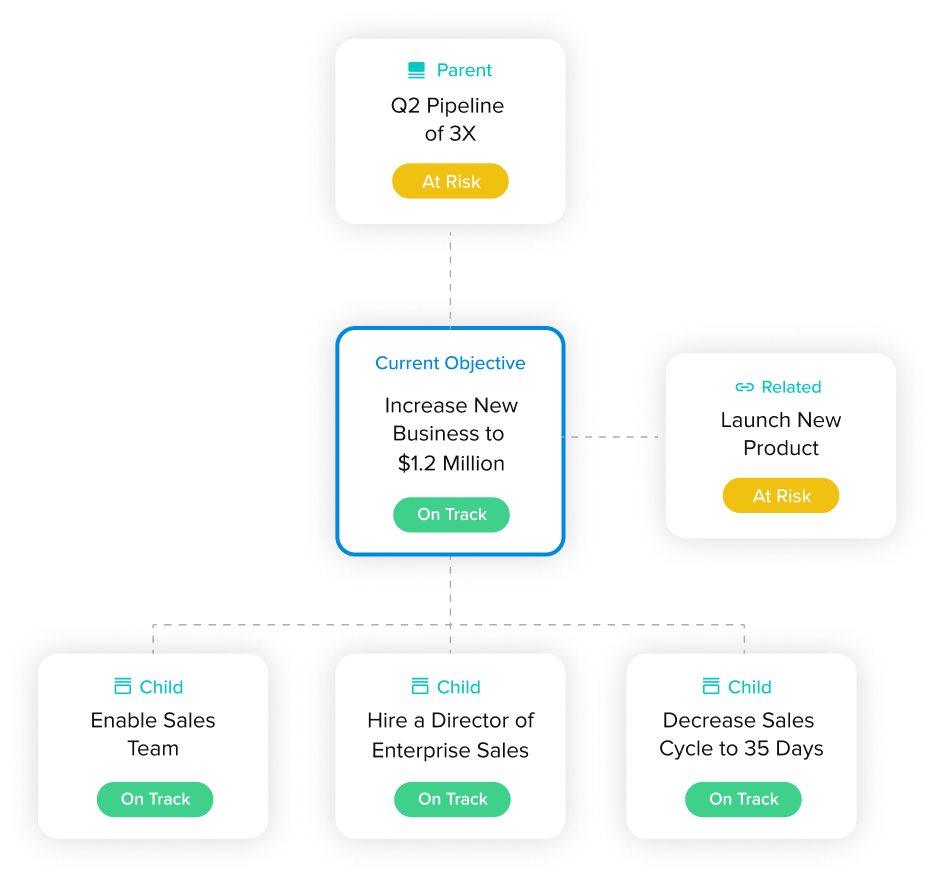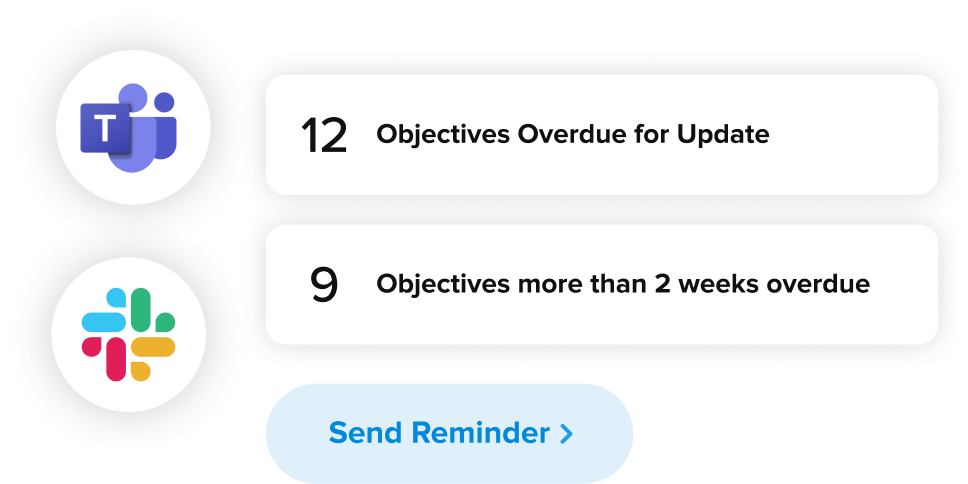If you are looking for a way to help your company meet all of its goals, then you’ve probably thought about implementing a framework for how you measure performance and align teams. After all, you have to make sure everyone is on the same page as you continue to scale. Especially at growth stage companies, if everyone isn’t working together, you’re likely to have issues meeting the objectives of the company. So, how can you set stepping stones along the way? Is there a way you can make this easier? That is where objectives and key results come in. If you are wondering how to write objectives and key results, there are several important points you should keep in mind.
First, you may be wondering where the idea of objectives and key results, usually shortened to OKRs, came from. Over the past few years, there has been a wave of OKR books after the process was made popular with OKRs Google. This tech giant wasn’t the first company to put the idea of OKRs into practice, as they originated with Andy Grove at Intel. However, Google’s success with this practice has become a much talked about concept, as many former leaders point to the framework as a critical component to the company’s success. Other companies in the tech industry believed they could mirror the success of Google by following the framework set by the company. Now, OKRs are seen throughout all industries.
At the same time, there are a lot of questions people have about setting OKRs. Some people try to set too many OKRs, making them difficult to track. Other people might not be following the right model, setting OKRs that are ineffective or not clearly defined. In some cases, people simply do not have the right tools that they are trying to get the most out of objectives and key results. That is why it’s helpful to take a closer look at exactly what you need to do if you would like to set effective OKRs. It starts with having the proper framework.
OKR Framework
Before you can truly dive into the process of setting your OKRs, you have to understand exactly what the OKR framework is. When it comes to an OKR framework template, the idea is to have an overarching objective. What is it that you would like to achieve? This objective should be ambitious. Then, beneath this objective, you have to write several key results. These key results are metrics that should clearly lead to you or your company accomplishing the objective. In general, you should try to have three to five key results for each individual objective. Try not to write too many key results, as you may have a difficult time tracking them.
These key results should be relatively straightforward, and most importantly, measurable. They should be easy to track and define. If you take a look at the history of Google OKR, you need to make sure these key results are data-driven and objective. That way, you can track them accurately over a given time period. You might even want to set regular meetings with your employees to review how they are doing when it comes to their objectives and key results. If you are able to track these key results, you can make sure everyone is still on track.
Ultimately, the implementation of the OKR framework is a critical part of the OKR methodology. If you are able to track your objectives and key results carefully, you will enjoy much more success when it comes to your OKRs and rolling the framework out across teams. As we’ve seen for countless companies, if you don’t have a good framework to start, then when you get in the weeds, it’s easy to lose track of how you're measuring outcomes. With that being said, it may also be helpful to take a closer look at a few OKR examples. That way, you have a model upon which you can base your own objectives and key results.
How To Set OKRs
So, as you are trying to develop your objectives and key results, you have to make sure you do this carefully. One of the best ways to do this is to follow several OKR best practices. If you are wondering how to set OKRs, it is helpful to start by looking at the difference between OKRs and KPIs. When it comes to an OKR vs. KPI, there are several important points you need to keep in mind. These include:
- KPI stands for a key performance indicator. Even though this is another great way to help you meet your goals, they are not the same things as objectives and key results. Key performance indicators are performance metrics and evaluate the success of a particular project. Key performance indicators can vary depending on the industry, organization, and the activity for which it was originally set.
- In contrast, OKRs are sets of multiple key results. They are designed to track the overall performance of company objectives or initiatives. Usually, objectives and key results are limited by a specific period of time. They are aspirational, ambitious, and designed to contribute towards the company’s overall success.
It is helpful to take a closer look at personal OKR examples to learn more about OKR best practices. One of the most important best practices you have to keep in mind is that you must re-evaluate the success of your objectives and key results regularly. That way, you can see if anything has to be changed.
OKR Examples
No matter what industry in which you operate, objectives and key results can be helpful. One of the most common industries in which people set objectives and key results is the SaaS space. There are a few helpful OKR examples, including company OKR examples.
For example, when it comes to real OKR examples, your company may have a software product that it would like to release by the end of the year. If the objective is to release a new software program by the end of the year, a few key results could be:
- Higher three new software engineers before the end of the first quarter.
- Get 15 new prospects to sign up as beta users for the new project by the end of the second quarter.
- Develop a comprehensive marketing plan that can be released by the end of the summer.
These are several key results that you may have to take care of if you would like to release a new software solution by the end of the year. The goal is to tie these key results directly to the objective, showing how they relate to one another.
Another example of an objective your company may have is to increase awareness of a new feature that is coming out, which is one of the best OKR examples for growth. How can you do that? A few key results that might be relevant include:
- Receive feedback on the new feature from 50 existing customers and 10 prospects.
- Increase ACV of existing customers by 10%.
- Create five case studies with existing customers to publish at the time of the release of the new feature.
Noticed that all of these key results have been put in place to try to help the company make the objective of raising awareness for a new feature release.
These are just a few of the many OKRs examples of objectives and key results you may be able to put to use for your company. Particularly if you work in the software industry, objectives and key results are particularly helpful.
OKR Tools
Clearly, there is a lot that you have to think about if you are trying to get the most out of your objectives and key results. If you are going through this process for the first time, it is normal to have questions and concerns. You might be wondering how you can specifically apply this methodology to your company, setting it up for success in the future. If you would like to get the most out of this methodology, then you have to make sure you have the right OKR tools for your business.
When you are trying to find tools that can help you achieve operational excellence OKRs, you are probably tempted to find the least expensive option available. For example, you might even start with a free tool or you might develop an OKR template Google Sheets that you can use to track the individual objectives and key results of your managers, employees, and staff members. Even though this might be a good place to start, this is not going to help you get the most out of your OKR methodology. Instead, you need to use a solution that has been specifically designed to help you maximize your performance when it comes to your objectives and key results, and more importantly, scale with your business.
That is where Elate can help you.
Elate was built for high growth companies to help create team alignment and accountability as you scale. The last thing teams want is to bounce between a handful of different technologies as you try to roll out an OKR framework.
With Elate, you can set objectives and key results for every level, and automate the process of integrating key results to measure impact and performance across the company. This includes not only individual employees but also departments, managers, and even the executive level.
Furthermore, Elate was built to be intuitive enough to track company OKRs, as well as personal OKRs set at the individual level. That way, you can connect every objective throughout your business to measure overall performance.
In the end, OKRs are a great way to help your company grow. If you really want to take advantage of everything that this methodology has to offer, you need to leverage the best OKR tools in the industry, ensuring success for your entire company.
If you’re interested in learning more about Elate and how we are working with other strategy and ops leaders, reach out for a demo today!




























